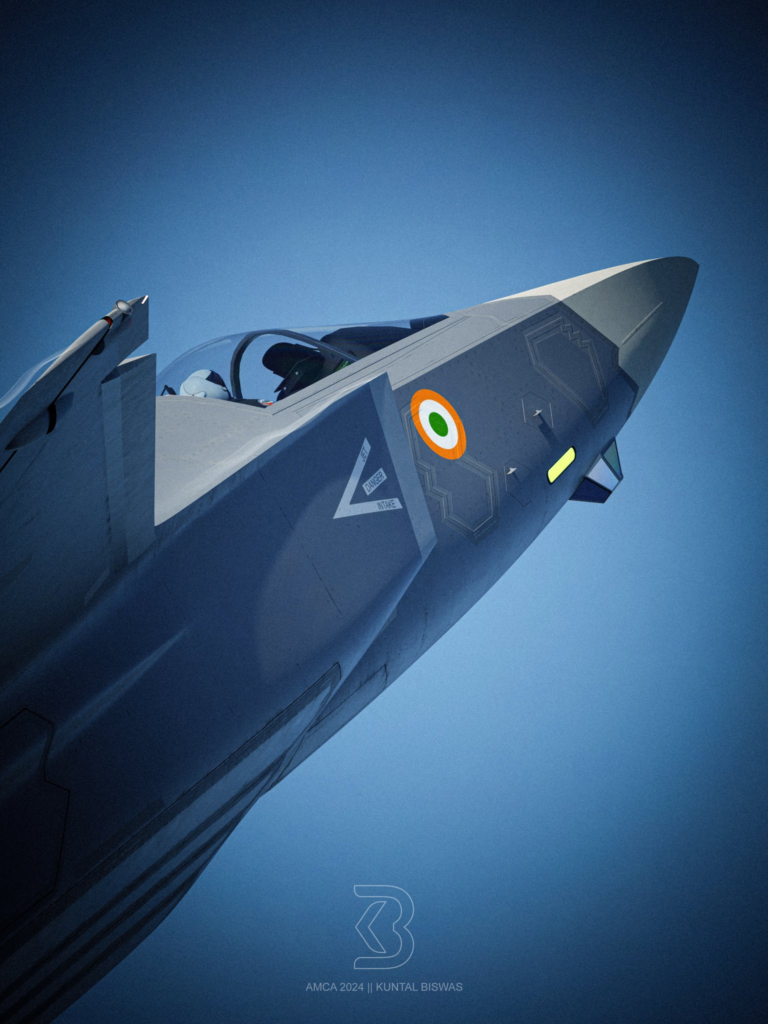An AMCA’s Electro-Optical Targeting System ( EOTS ) is a really important system. This progress should be celebrated but due to the ongoing delays in the delivery of the GE F404 engine have caused significant setbacks in the Tejas Mk1A program, adding to the frustration of Indian defense enthusiasts. Meanwhile, discussions around the local assembly of the more advanced GE F414 engine remain inconclusive, and the High Thrust Engine program is still in its early stages, stuck in roadmap development. Despite these challenges, the importance of this critical sensor technology cannot be underestimated, as it is poised to propel India’s Advanced Medium Combat Aircraft (AMCA) into the realm of true fifth-generation fighters, cementing its place among the most advanced combat aircraft globally.

India’s defense sector, led by the Defence Research and Development Organisation (DRDO), continues to make significant strides in aerial combat technology. The Lab Instruments Research & Development Establishment (IRDE), a key DRDO lab, is currently developing the Electro-Optical Targeting System (EOTS) for the Advanced Medium Combat Aircraft (AMCA). This system is designed to improve the aircraft’s stealth capabilities and enhance its operational effectiveness, aligning with global fifth-generation fighter technologies.
Recently, we reported DRDO’s ongoing efforts to create this cutting-edge EOTS for the AMCA program. In the same report, we highlighted how DRDO is engaging an industry partner to accelerate the system’s realization. This collaboration marks an important milestone, emphasizing the increasing role of private industry in the development of indigenous defense technologies.
Early Reports on EOTS Progress
We were the first to report on DRDO’s plans to develop this critical sensor system back in 2021. Following this early revelation, a DRDO flying test bed was modified to accommodate the EOTS sensor for flight testing and data collection. This modification was a key step toward validating the sensor’s performance in real-world conditions, ensuring its seamless integration into the AMCA aircraft.

Importance of EOTS in Fifth-Generation Aircraft
Electro-Optical Targeting Systems (EOTS) are essential for enhancing a fighter jet’s detection, tracking, and engagement capabilities without compromising its stealth profile. Unlike radar systems, EOTS is a passive sensor that does not emit signals, which significantly reduces the chances of detection. The integration of EOTS into platforms like the F-35 Lightning II, China’s J-20, and Turkey’s Kaan demonstrates its strategic importance in modern aerial warfare. As India develops the AMCA, including this advanced targeting system will help maintain parity with global competitors.

Indian Private Sector’s Growing Role
At the Bengaluru SpaceExpo 2024, Optics and Allied Engineering Pvt. Ltd. (Optica), an Indian private company, displayed the EOTS’s outer casing and sensor. This suggests that Optica has either been involved in fabricating the sensor for DRDO’s flying test bed or is preparing to produce the sensor for the first prototype. Both possibilities are significant because they indicate that the Indian private sector is playing a larger role in defense manufacturing. This growing collaboration between DRDO and private firms is essential for building a sustainable defense infrastructure in the country.


Advancing the AMCA Program
The development of the EOTS is also a clear indication that the AMCA project is moving forward with key technologies starting to take shape. As the EOTS progresses through testing and validation phases, its successful integration into the AMCA will be pivotal for the aircraft’s ability to compete with global fifth-generation fighters. Moreover, the partnership with private industry will ensure faster development and deployment, which is critical for meeting the Indian Air Force’s operational timelines.
Overall, The collaboration between DRDO and Indian industry to develop the Electro-Optical Targeting System (EOTS) for the AMCA marks a significant advancement in India’s indigenous fighter jet program. With private firms like Optica stepping up and key technologies like the EOTS reaching advanced development stages, India is well on its way to enhancing its combat aircraft capabilities. As this project progresses, it will not only boost the AMCA’s operational effectiveness but also strengthen India’s defense manufacturing ecosystem for the future. Stay tuned for more updates on this exciting development in India’s defense technology landscape.
